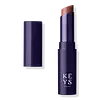What's inside
What's inside
 Key Ingredients
Key Ingredients

 Benefits
Benefits

 Concerns
Concerns

 Ingredients Side-by-side
Ingredients Side-by-side

Ricinus Communis Seed Oil
MaskingCamellia Oleifera Seed Oil
Skin ConditioningBeeswax
Emulsion StabilisingPersea Gratissima Oil
Skin ConditioningSynthetic Wax
AbrasiveOlea Europaea Fruit Oil
MaskingButyrospermum Parkii Butter
Skin ConditioningEuphorbia Cerifera Wax
Silica Dimethyl Silylate
EmollientParfum
MaskingAnastatica Hierochuntica Extract
AstringentMica
Cosmetic ColorantCaprylic/Capric Triglyceride
MaskingPolyhydroxystearic Acid
EmulsifyingIsostearic Acid
CleansingLecithin
EmollientPolyglyceryl-3 Polyricinoleate
EmulsifyingButylene Glycol
HumectantCaprylyl Glycol
EmollientPhenoxyethanol
PreservativePEG-8
HumectantTocopherol
AntioxidantAscorbyl Palmitate
AntioxidantAscorbic Acid
AntioxidantWater
Skin ConditioningCitric Acid
BufferingCI 77491
Cosmetic ColorantCI 77492
Cosmetic ColorantCI 77499
Cosmetic ColorantCI 15850
Cosmetic ColorantRicinus Communis Seed Oil, Camellia Oleifera Seed Oil, Beeswax, Persea Gratissima Oil, Synthetic Wax, Olea Europaea Fruit Oil, Butyrospermum Parkii Butter, Euphorbia Cerifera Wax, Silica Dimethyl Silylate, Parfum, Anastatica Hierochuntica Extract, Mica, Caprylic/Capric Triglyceride, Polyhydroxystearic Acid, Isostearic Acid, Lecithin, Polyglyceryl-3 Polyricinoleate, Butylene Glycol, Caprylyl Glycol, Phenoxyethanol, PEG-8, Tocopherol, Ascorbyl Palmitate, Ascorbic Acid, Water, Citric Acid, CI 77491, CI 77492, CI 77499, CI 15850
Water
Skin ConditioningDimethicone
EmollientTalc
AbrasiveDicaprylyl Carbonate
EmollientIsostearyl Neopentanoate
EmollientPEG-10 Dimethicone
Skin ConditioningDimethicone/Vinyl Dimethicone Crosspolymer
Skin ConditioningGlycerin
HumectantTrimethylsiloxysilicate
EmollientIsododecane
EmollientBis-PEG/PPG-14/14 Dimethicone
EmollientPhenoxyethanol
PreservativeSodium Chloride
MaskingDimethicone Crosspolymer
Emulsion StabilisingMagnesium Sulfate
Hydrogen Dimethicone
Sodium Dehydroacetate
PreservativeTrehalose
HumectantUrea
BufferingPotassium Sorbate
PreservativeSilica
AbrasiveDisteardimonium Hectorite
StabilisingAluminum Hydroxide
EmollientBenzoic Acid
MaskingSodium Hyaluronate
HumectantC24-28 Alkyl Methicone
EmollientPentylene Glycol
Skin ConditioningSerine
MaskingDehydroacetic Acid
PreservativePropylene Carbonate
SolventEthylhexylglycerin
Skin ConditioningAlgin
MaskingCaprylyl Glycol
EmollientDisodium Phosphate
BufferingGlyceryl Polyacrylate
Pullulan
Tocopherol
AntioxidantPotassium Phosphate
BufferingIron Oxides
CI 77891
Cosmetic ColorantWater, Dimethicone, Talc, Dicaprylyl Carbonate, Isostearyl Neopentanoate, PEG-10 Dimethicone, Dimethicone/Vinyl Dimethicone Crosspolymer, Glycerin, Trimethylsiloxysilicate, Isododecane, Bis-PEG/PPG-14/14 Dimethicone, Phenoxyethanol, Sodium Chloride, Dimethicone Crosspolymer, Magnesium Sulfate, Hydrogen Dimethicone, Sodium Dehydroacetate, Trehalose, Urea, Potassium Sorbate, Silica, Disteardimonium Hectorite, Aluminum Hydroxide, Benzoic Acid, Sodium Hyaluronate, C24-28 Alkyl Methicone, Pentylene Glycol, Serine, Dehydroacetic Acid, Propylene Carbonate, Ethylhexylglycerin, Algin, Caprylyl Glycol, Disodium Phosphate, Glyceryl Polyacrylate, Pullulan, Tocopherol, Potassium Phosphate, Iron Oxides, CI 77891
 Reviews
Reviews

Ingredients Explained
These ingredients are found in both products.
Ingredients higher up in an ingredient list are typically present in a larger amount.
Caprylyl Glycol is a humectant and emollient, meaning it attracts and preserves moisture.
It is a common ingredient in many products, especially those designed to hydrate skin. The primary benefits are retaining moisture, skin softening, and promoting a healthy skin barrier.
Though Caprylyl Glycol is an alcohol derived from fatty acids, it is not the kind that can dry out skin.
This ingredient is also used as a preservative to extend the life of products. It has slight antimicrobial properties.
Learn more about Caprylyl GlycolPhenoxyethanol is a preservative that has germicide, antimicrobial, and aromatic properties. Studies show that phenoxyethanol can prevent microbial growth. By itself, it has a scent that is similar to that of a rose.
It's often used in formulations along with Caprylyl Glycol to preserve the shelf life of products.
Tocopherol (also known as Vitamin E) is a common antioxidant used to help protect the skin from free-radicals and strengthen the skin barrier. It's also fat soluble - this means our skin is great at absorbing it.
Vitamin E also helps keep your natural skin lipids healthy. Your lipid skin barrier naturally consists of lipids, ceramides, and fatty acids. Vitamin E offers extra protection for your skin’s lipid barrier, keeping your skin healthy and nourished.
Another benefit is a bit of UV protection. Vitamin E helps reduce the damage caused by UVB rays. (It should not replace your sunscreen). Combining it with Vitamin C can decrease sunburned cells and hyperpigmentation after UV exposure.
You might have noticed Vitamin E + C often paired together. This is because it is great at stabilizing Vitamin C. Using the two together helps increase the effectiveness of both ingredients.
There are often claims that Vitamin E can reduce/prevent scarring, but these claims haven't been confirmed by scientific research.
Learn more about TocopherolWater. It's the most common cosmetic ingredient of all. You'll usually see it at the top of ingredient lists, meaning that it makes up the largest part of the product.
So why is it so popular? Water most often acts as a solvent - this means that it helps dissolve other ingredients into the formulation.
You'll also recognize water as that liquid we all need to stay alive. If you see this, drink a glass of water. Stay hydrated!
Learn more about Water